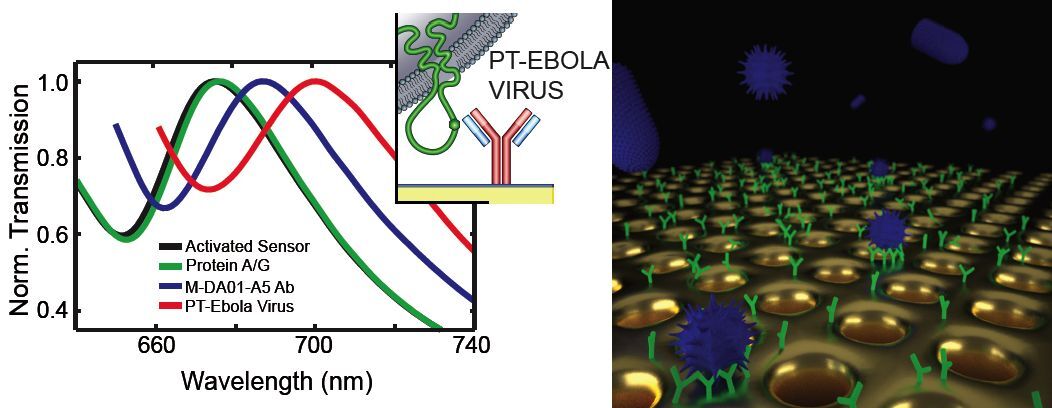While there are already effective methods of screening samples of body fluids for viruses such as Ebola, these tend to require a fair amount of sample preparation time and a decent technological infrastructure. Time isn’t always in abundance at places such as airports, while infrastructure is lacking in many developing nations. Fortunately, researchers have created a diagnostic tool that can detect viruses quickly and easily, and that’s about the size of a quarter.
The biosensor was developed by a team led by Assistant Professor Hatice Altug of Boston University’s College of Engineering, and Assistant Professor John Connor of the School of Medicine.
The device incorporates plasmonic nanohole arrays, which are described as “arrays of apertures with diameters of about 200 to 350 nanometers on metallic films that transmit light more strongly at certain wavelengths.” Fluid samples such as blood or serum are placed on the biosensor, at which point any live viruses present will bind to its surface. This causes the refractive index of the solution in that area to change, which in turn causes a shift in the resonance frequency of the light being transmitted through the nanoholes. The concentration of the virus within the solution can be determined by the magnitude of that frequency shift.

Samples require little or no preparation before being tested by the biosensor. More traditional testing methods require samples to undergo a process of enzymatic amplification, or fluorescent tagging.
While the team has already demonstrated the device’s ability to detect a number of viruses within a laboratory setting, they plan on creating a highly-portable version that can be used in the field with little training. “Our platform can be easily adapted for point-of-care diagnostics to detect a broad range of viral pathogens in resource-limited clinical settings at the far corners of the world, in defense and homeland security applications as well as in civilian settings such as airports,” said Altug.
The research was recently published in the journal Nano Letters.





